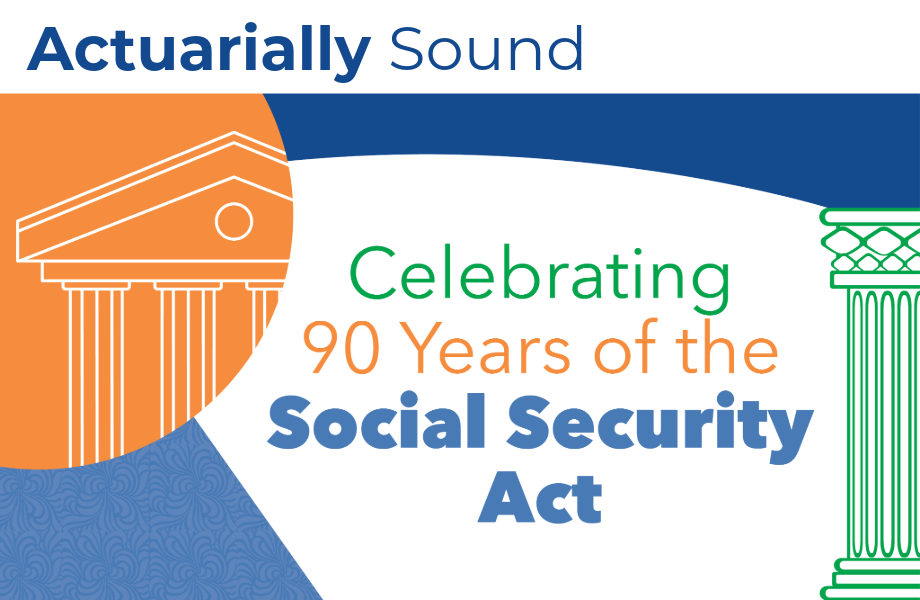
By Matthew Sonduck
Director, Public Policy
Social Security is celebrating its 90th anniversary on Aug. 14, a momentous achievement for the nation’s retirement and disability program. Federal inaction to shore up the system, however, is threatening its future-a risk that actuaries continue to help the public and policymakers better understand through the profession’s unique lens.
As noted by the Office of the Chief Actuary , as of Dec. 31, 2024, there were 68,455,973 beneficiaries of the Social Security program, with nearly 183,000,000 people funding the program via payroll taxes. Social Security is a significant public policy matter-often referred to as a “kitchen table” issue in the sense that it impacts the financial well-being of a sizable portion of the U.S. population.
For the Academy, Social Security is a perennial “mega” issue and is always on the list of key areas of focus in our federal outreach. For years, the Academy and our volunteers within the Retirement Practice Council and the Social Security Committee have emphasized the need for congressional action. The program continues to head toward insolvency, which would impact beneficiaries and taxpayers alike, and demands the engagement and the expertise of actuaries.
The Academy’s recently published Highlights from the 2025 Social Security Trustees Report indicates that:
- The combined Social Security trust fund reserves are projected to become depleted in 2034, one year earlier than was projected in last year’s report.
- If changes to the program are not implemented before 2034, only 81% of scheduled benefits would be payable after depletion, declining to 72% by 2099.
Nine years is not a long time. It’s also notable that other recent policy changes such as those included in the One Big Beautiful Bill Act or recent changes in immigration policy have the potential to negatively impact the program’s solvency.
Helping to address the financial challenges of Social Security is exactly the kind of public-interest purpose that drove many of the Academy’s founders that remains core to the Academy spirit today. As the idea of the Academy was still taking shape more than 60 years ago, visionary Henry Rood in 1958 captured the necessity of leveraging actuarial expertise for the public good, warning that “[t]he millions of people involved and the immense size of the assets of our life insurance companies and pension funds dictate protection from any possibility of unsound actuarial practices.”
Each year that goes by without congressional action to address Social Security’s projected insolvency makes the potential solution more difficult. As noted in the Academy’s 2023 Reforming Social Security Sooner Rather Than Later issue brief, “It is important that Congress immediately focus on this issue [Social Security’s solvency concerns] because delay makes the solution more difficult, as it gradually limits the viable options to those relying on increasing taxes.” This has been a consistent theme from the Academy, as reflected in the August 2024 Popularity Won’t Save Social Security If Policymakers Don’t Act blog.
There are options that Congress could take to address the program’s solvency. If you are curious and want to try your hand in addressing the program’s financial condition, take the Academy’s Social Security Challenge. Want to hear the latest information on the future of Social Security program? Register for the Academy’s Sept. 18 retirement symposium, “Actuarial Perspectives and Solutions for Strengthening the U.S. Retirement System.” Included in that event is a conversation titled “Social Security at 90: What Will it Look Like at 100?” Want to dive deeper into this important topic? Visit the Academy’s website for the latest publications from the Academy’s Social Security Committee.
Finding a solution to keep Social Security healthy is possible, but it will require a lot of work. Policymakers have its future in their hands. As we celebrate Social Security’s milestone birthday, the Academy will continue to be at the table, discussing ways to strengthen and preserve this hallmark public program with policymakers and other stakeholders.